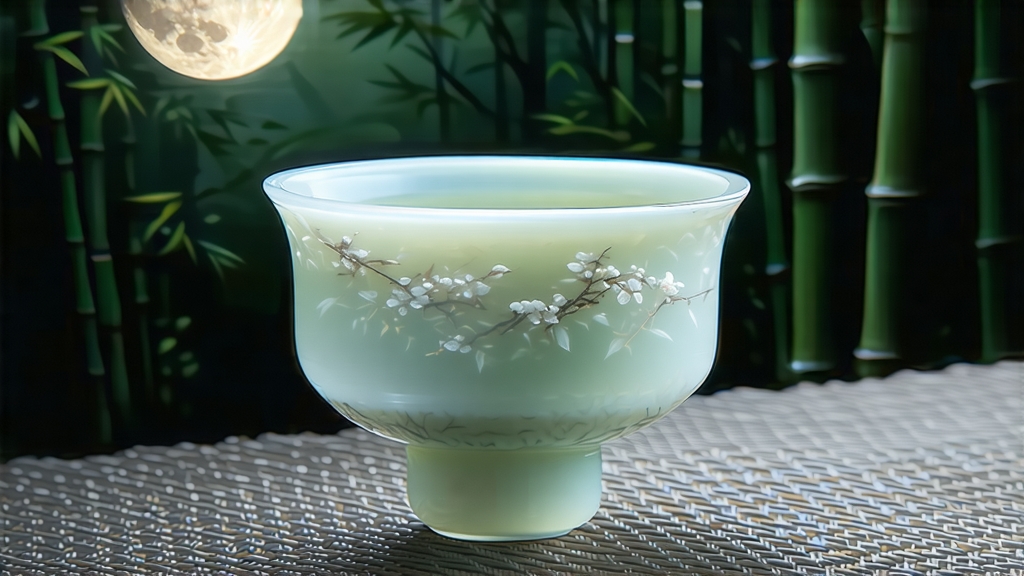
Tucked high on the forested ridges of Yunnan’s Simao and Lincang prefectures, a tea that rarely reaches international shelves is harvested in almost complete darkness. Locals call it Yue Guang Bai—“Moonlight White”—a name that sounds more like a Tang dynasty poem than an agricultural product. To the uninitiated it may resemble a pale white tea from Fujian, yet one sip reveals a personality entirely its own: orchid-sweet on the tip of the tongue, then a sudden rush of honeyed malt and wild mountain herbs that lingers like cool night air.
1. Historical haze and mythic birth
Unlike the well-documented pedigree of Fuding White Tea, Yue Guang Bai’s origin is wrapped in moon-lit folklore. The most repeated story places its birth in the late 1990s, when a Jingmai Mountain farmer, reluctant to wake his family before dawn, decided to wither freshly plucked buds and leaves under the full moon. By morning the leaf edges had turned an iridescent silver while the center remained an inky charcoal—an appearance said to mimic the lunar surface. The tea fetched triple the village’s normal price at the next market, and a new style was born. Skeptics note that similar “moon-withering” appears in 1980s county annals, but whatever the date, Yue Guang Bai is a millennial tea, a youngster among China’s 1,500-year-old white tea tradition, and its very youth explains its experimental aura.
2. Botanical roots: big-leaf meets white craft
Yue Guang Bai is crafted not from the small-leaf tea bushes of coastal Fujian but from Yunnan’s ancient Da Ye Zhong (large-leaf) Assamica cultivars, some of them 200- to 800-year-old arbors. These trees develop higher polyphenol and caffeine levels, thicker cell walls, and a propensity for post-fermentation. Applying the minimal, non-enzyme-killing techniques of white tea—merely withering and drying—lets the leaf oxidize slowly, expressing a hybrid profile: white tea’s lightness with puer’s depth.
3. Micro-terroir: altitude, mist, and lunar pull
The best lots grow between 1,600 m and 1,900 m on red lateritic soil, where diurnal swings can exceed 15 °C. Night temperatures plummet, slowing oxidation and locking in floral volatiles. Forest cover filters sunlight into a shifting mosaic, encouraging long, succulent buds that can outweigh three Fujian Silver Needles combined. Local farmers insist the lunar calendar matters: buds plucked on the 13th–16th days of the eighth lunar month contain the highest L-theanine, a claim unsupported by peer-reviewed data but fervently believed.
4. Plucking standard: one bud to love, two leaves to comfort
Premium Yue Guang Bai follows a 1:2 ratio—fat silvery apical bud plus the first two leaves. The bud provides amino-driven sweetness, the first leaf contributes creamy texture, and the second adds a hint of mountain sage. Pickers work from 8 p.m. to midnight, headlamps off, guided by moonlight to avoid “sun-shock” that might accelerate red-edge oxidation.
5. Moon-withering: the slow dance of night
Leaves are spread on ventilated bamboo trays stacked inside open-walled barns. Night breezes, humidity around 72%, and temperatures near 18 °C allow 28–36 hours of uninterrupted withering. Unlike sun-withering common in Fujian, no direct light touches the leaf; chlorophyll breaks down gradually, explaining the unique bi-color: silver trichomes on the reverse, dark olive on the face. Master tea makers “turn” the leaves every 90 minutes, rotating trays 180° so moisture migrates evenly. Around dawn, when mountain mist lifts, the leaf reaches 65% moisture, pliable enough for the next step.
6. Shade-fixation: locking the night in
Although white tea is defined by the absence of high-temperature fixation, Yue Guang Bai undergoes a gentle 50 °C “shade bake” for 8–10 minutes in wood-fired, charcoal-warmed rooms. The goal is not pan-shock de-enzyming but rather a soft denaturation that halts excessive oxidation while preserving white tea’s signature enzyme activity. The leaf exits at 8% moisture,